-
 Bitcoin
Bitcoin $107,247.2038
-0.18% -
 Ethereum
Ethereum $2,424.7947
0.34% -
 Tether USDt
Tether USDt $1.0003
-0.02% -
 XRP
XRP $2.1171
-3.33% -
 BNB
BNB $645.6618
0.06% -
 Solana
Solana $141.5898
-1.32% -
 USDC
USDC $0.9998
0.00% -
 TRON
TRON $0.2710
-0.41% -
 Dogecoin
Dogecoin $0.1602
-2.99% -
 Cardano
Cardano $0.5553
-2.28% -
 Hyperliquid
Hyperliquid $36.3019
-2.42% -
 Bitcoin Cash
Bitcoin Cash $491.7212
2.04% -
 Chainlink
Chainlink $13.0810
-0.23% -
 Sui
Sui $2.6080
-5.06% -
 UNUS SED LEO
UNUS SED LEO $9.0040
-0.05% -
 Stellar
Stellar $0.2350
-3.06% -
 Avalanche
Avalanche $17.2294
-2.31% -
 Toncoin
Toncoin $2.8075
-1.05% -
 Shiba Inu
Shiba Inu $0.0...01121
-3.43% -
 Litecoin
Litecoin $84.2215
-0.32% -
 Hedera
Hedera $0.1429
-4.88% -
 Monero
Monero $312.2199
-0.90% -
 Dai
Dai $0.9997
-0.01% -
 Ethena USDe
Ethena USDe $0.9999
-0.02% -
 Polkadot
Polkadot $3.2973
-2.60% -
 Bitget Token
Bitget Token $4.4742
3.12% -
 Pi
Pi $0.5631
-10.10% -
 Uniswap
Uniswap $6.7817
-2.06% -
 Pepe
Pepe $0.0...09252
-3.74% -
 Aave
Aave $251.3830
-2.24%
Does the ADX fall back after breaking through 30 mean that the trend is weakening?
When ADX drops below 30 after a breakout, it may signal a pause, not necessarily a trend reversal—use with DI lines, price patterns, and volume for confirmation.
Jun 26, 2025 at 11:14 pm
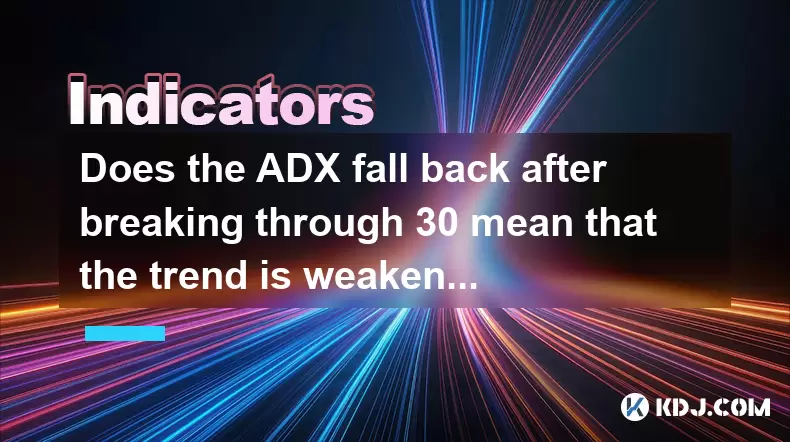
Understanding the ADX Indicator and Its Role in Trend Analysis
The Average Directional Index (ADX) is a technical analysis tool developed by Welles Wilder to quantify the strength of a trend. While it does not indicate the direction of the trend, it provides traders with an objective measure of how strong the current trend—whether bullish or bearish—is. The ADX line typically ranges from 0 to 100, where values below 20 suggest a weak or non-existent trend, and values above 40 indicate a strong trend.
One of the key observations traders often make is when the ADX line rises above 30 and then subsequently falls back below it. This movement raises questions about whether such behavior signals a weakening trend.
It’s crucial to understand that ADX measures trend strength, not direction.
What Happens When ADX Crosses Above 30?
When the ADX crosses above the 30 threshold, it suggests that a trend has gained enough momentum to be considered significant. Many traders use this as a confirmation signal to enter trades in the direction of the existing trend.
- A rising ADX above 30 indicates increasing trend strength.
- It often coincides with price movements that are becoming more directional.
- Traders may look for crossovers between the +DI and -DI lines to determine the direction of the trend.
This phase is usually marked by consistent price movement with lower volatility and reduced sideways consolidation.
Why Does the ADX Fall Back Below 30 After a Breakout?
After a period of strong trending movement, it's common for the ADX to retreat below 30. This can occur due to several factors:
- Natural market cycles: Trends rarely move in a straight line and often experience pullbacks.
- Profit-taking: Traders locking in gains can cause a temporary stall in trend strength.
- Market uncertainty: News events, macroeconomic data, or regulatory changes can introduce hesitation into the market.
A drop in ADX doesn't necessarily mean the trend is over; it could simply reflect a pause or consolidation phase.
Does a Drop Below 30 Always Mean the Trend Is Weakening?
Not necessarily. A decline in ADX below 30 should be interpreted with caution and in context. Here are some scenarios to consider:
- If the price continues to move in the same direction despite the ADX falling, the trend might still be intact.
- Divergence between ADX and price action needs to be analyzed carefully.
- Short-term retracements may not invalidate a longer-term trend.
Traders should also pay attention to other indicators like moving averages, RSI, or volume to confirm whether the trend is indeed losing steam.
How to Use ADX Alongside Other Indicators for Confirmation
Relying solely on the ADX reading can lead to misinterpretation. Combining it with other tools can enhance decision-making accuracy:
- Use with DI lines: Watch the relationship between +DI and -DI. Even if ADX drops, as long as +DI remains above -DI (or vice versa), the trend direction hasn’t changed.
- Price patterns: Look for continuation patterns like flags, pennants, or higher highs/lower lows to validate ongoing trends.
- Volume indicators: Increasing volume during price moves can support the idea that the trend is still valid despite a dip in ADX.
- Candlestick formations: Bullish or bearish reversal candles within a larger trend can offer insights into potential resumption of movement.
Using multiple forms of confirmation helps avoid premature exits or false signals.
Practical Example Using Cryptocurrency Charts
Let’s take a practical example using a major cryptocurrency pair like BTC/USDT:
Imagine Bitcoin has been in a strong uptrend, and the ADX crosses above 30. Over the next few days, price continues upward, confirming the trend. Then, after a sharp rally, the ADX starts to fall back below 30.
- Despite this, the price remains above its 20-day moving average.
- Volume dips slightly but doesn’t collapse.
- On the daily chart, bullish candlesticks continue to form.
In this case, even though the ADX has dropped below 30, the trend itself may not have weakened—it could just be maturing or consolidating before another leg up.
Common Misinterpretations of ADX Movements
Many traders misinterpret what the ADX is actually signaling:
- Confusing a falling ADX with a reversal of trend.
- Assuming that once ADX drops below 30, the trend is dead.
- Ignoring the possibility of trend continuation after a brief ADX pullback.
These misunderstandings can lead to early exits from potentially profitable trades or missed opportunities during re-entry phases.
Frequently Asked Questions
Q: Can ADX stay above 30 for a prolonged period?
Yes, especially during strong bull or bear runs. In such cases, ADX can remain elevated for weeks or even months. However, it will eventually decline as markets tend to cycle between trending and consolidating phases.
Q: Is ADX reliable for short-term trading?
ADX is better suited for medium to long-term trend identification. For intraday or scalping strategies, it may lag behind price action and produce delayed signals.
Q: What happens if ADX rises above 50 and then falls?
An ADX value above 50 indicates an extremely strong trend. A subsequent drop doesn’t immediately negate the trend but may suggest the trend is entering a mature phase or nearing a potential exhaustion point.
Q: Should I trade based only on ADX crossing 30?
No. ADX alone shouldn’t be the sole basis for entering or exiting trades. It should always be used in conjunction with other tools to confirm trend direction, momentum, and potential reversals.
Disclaimer:info@kdj.com
The information provided is not trading advice. kdj.com does not assume any responsibility for any investments made based on the information provided in this article. Cryptocurrencies are highly volatile and it is highly recommended that you invest with caution after thorough research!
If you believe that the content used on this website infringes your copyright, please contact us immediately (info@kdj.com) and we will delete it promptly.
- Crypto Presales in 2025: MAGACOIN FINANCE and the Hunt for New Coins
- 2025-06-27 04:50:12
- Senate, Bitcoin, and the Reserve: What's the Deal?
- 2025-06-27 04:30:12
- Bitcoin, Collateral, and Mortgages: A New York Perspective on Crypto's Housing Play
- 2025-06-27 04:30:12
- Trump, Crypto, and Stablecoins: A New York Minute on WLF's Bold Moves
- 2025-06-27 04:57:13
- Crypto Liquidity, Centralized Exchanges, and 2025 Trends: What's the Deal?
- 2025-06-27 04:35:12
- Meme Coins in 2025: Long-Term Growth or Just a Passing Fad?
- 2025-06-27 05:02:09
Related knowledge
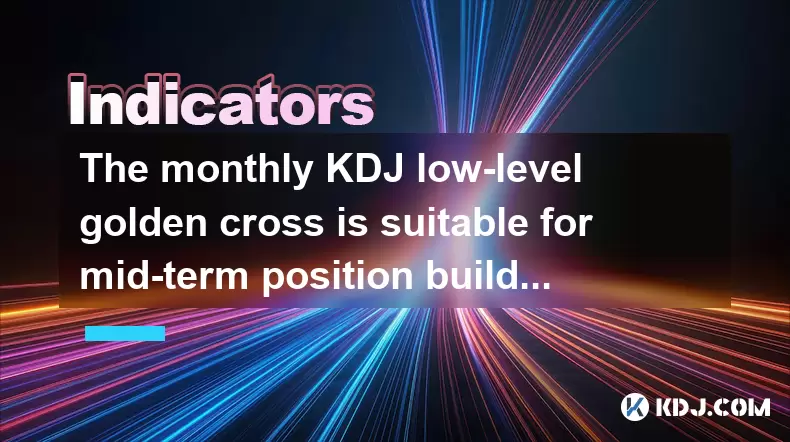
The monthly KDJ low-level golden cross is suitable for mid-term position building?
Jun 27,2025 at 03:14am
Understanding the Monthly KDJ IndicatorThe KDJ indicator, also known as the stochastic oscillator, is a momentum tool widely used in technical analysis within the cryptocurrency market. It consists of three lines: the K line, the D line, and the J line. These lines help traders identify overbought or oversold conditions, potential trend reversals, and e...
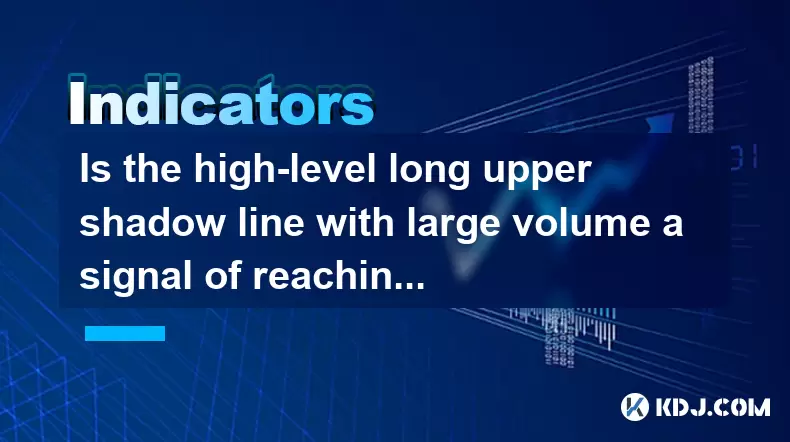
Is the high-level long upper shadow line with large volume a signal of reaching the top?
Jun 27,2025 at 04:50am
Understanding the High-Level Long Upper Shadow LineIn technical analysis within the cryptocurrency market, candlestick patterns play a crucial role in predicting price movements. A high-level long upper shadow line, often referred to as a shooting star or inverted hammer, is a specific type of candlestick pattern that appears at the top of an uptrend. T...
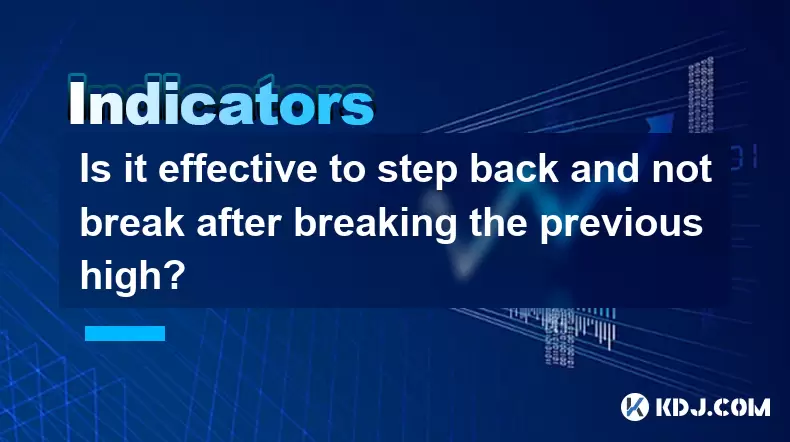
Is it effective to step back and not break after breaking the previous high?
Jun 27,2025 at 05:01am
Understanding the Concept of Breaking Previous HighsIn cryptocurrency trading, breaking a previous high refers to when an asset's price surpasses its last recorded peak. This is often seen as a sign of strong momentum and bullish sentiment. Traders closely monitor these levels because they can indicate potential trend continuation or reversal points. Wh...
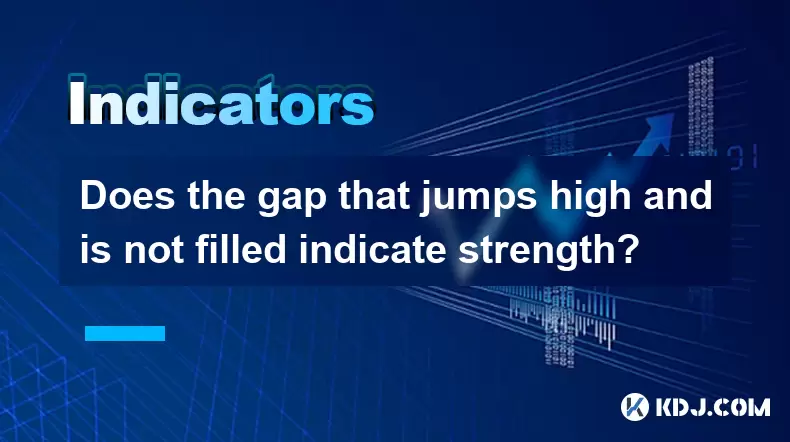
Does the gap that jumps high and is not filled indicate strength?
Jun 26,2025 at 11:36pm
Understanding the Concept of Gaps in Cryptocurrency ChartsIn the world of cryptocurrency trading, gaps refer to areas on a price chart where the price of an asset jumps significantly up or down, leaving no trading activity between two specific points. These gaps typically occur due to after-hours news, market sentiment shifts, or sudden influxes of buy/...
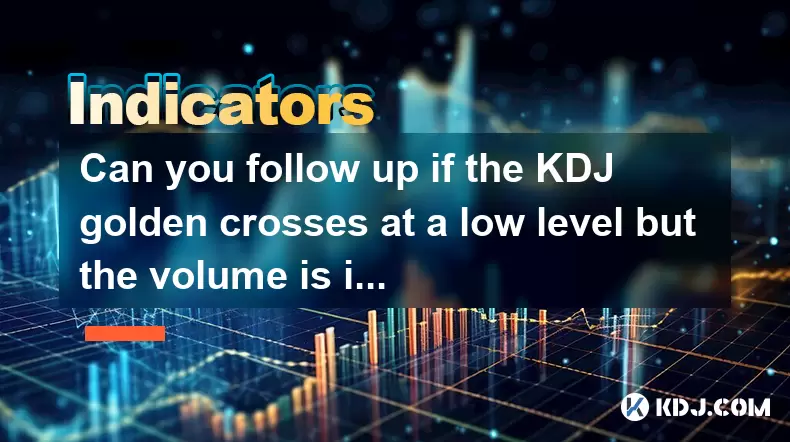
Can you follow up if the KDJ golden crosses at a low level but the volume is insufficient?
Jun 27,2025 at 12:01am
Understanding the KDJ Indicator in Cryptocurrency TradingThe KDJ indicator, also known as the stochastic oscillator, is a popular technical analysis tool used by cryptocurrency traders to identify potential buy and sell signals. It consists of three lines: the %K line, the %D line (which is a moving average of %K), and the %J line (a projection of the t...
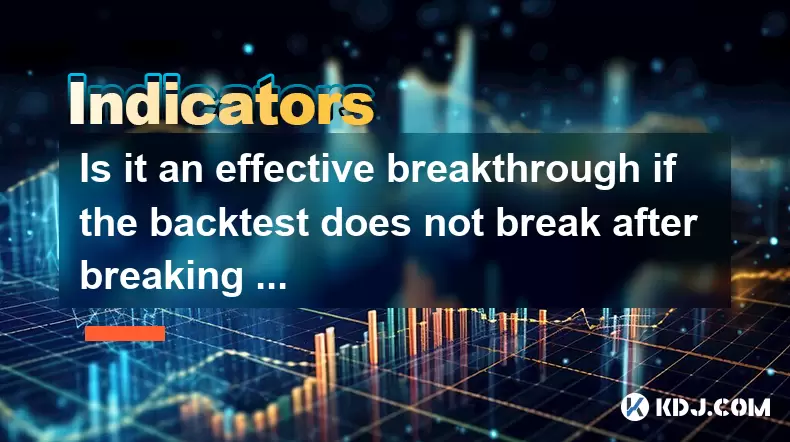
Is it an effective breakthrough if the backtest does not break after breaking through the neckline?
Jun 26,2025 at 10:08pm
Understanding the Role of Blockchain in Secure TransactionsBlockchain technology is at the heart of secure cryptocurrency transactions. Each block contains a list of transactions, and once recorded, altering past blocks becomes nearly impossible without network consensus. This immutability ensures that once a transaction is confirmed, it cannot be rever...

The monthly KDJ low-level golden cross is suitable for mid-term position building?
Jun 27,2025 at 03:14am
Understanding the Monthly KDJ IndicatorThe KDJ indicator, also known as the stochastic oscillator, is a momentum tool widely used in technical analysis within the cryptocurrency market. It consists of three lines: the K line, the D line, and the J line. These lines help traders identify overbought or oversold conditions, potential trend reversals, and e...

Is the high-level long upper shadow line with large volume a signal of reaching the top?
Jun 27,2025 at 04:50am
Understanding the High-Level Long Upper Shadow LineIn technical analysis within the cryptocurrency market, candlestick patterns play a crucial role in predicting price movements. A high-level long upper shadow line, often referred to as a shooting star or inverted hammer, is a specific type of candlestick pattern that appears at the top of an uptrend. T...

Is it effective to step back and not break after breaking the previous high?
Jun 27,2025 at 05:01am
Understanding the Concept of Breaking Previous HighsIn cryptocurrency trading, breaking a previous high refers to when an asset's price surpasses its last recorded peak. This is often seen as a sign of strong momentum and bullish sentiment. Traders closely monitor these levels because they can indicate potential trend continuation or reversal points. Wh...

Does the gap that jumps high and is not filled indicate strength?
Jun 26,2025 at 11:36pm
Understanding the Concept of Gaps in Cryptocurrency ChartsIn the world of cryptocurrency trading, gaps refer to areas on a price chart where the price of an asset jumps significantly up or down, leaving no trading activity between two specific points. These gaps typically occur due to after-hours news, market sentiment shifts, or sudden influxes of buy/...

Can you follow up if the KDJ golden crosses at a low level but the volume is insufficient?
Jun 27,2025 at 12:01am
Understanding the KDJ Indicator in Cryptocurrency TradingThe KDJ indicator, also known as the stochastic oscillator, is a popular technical analysis tool used by cryptocurrency traders to identify potential buy and sell signals. It consists of three lines: the %K line, the %D line (which is a moving average of %K), and the %J line (a projection of the t...

Is it an effective breakthrough if the backtest does not break after breaking through the neckline?
Jun 26,2025 at 10:08pm
Understanding the Role of Blockchain in Secure TransactionsBlockchain technology is at the heart of secure cryptocurrency transactions. Each block contains a list of transactions, and once recorded, altering past blocks becomes nearly impossible without network consensus. This immutability ensures that once a transaction is confirmed, it cannot be rever...
See all articles
























































































